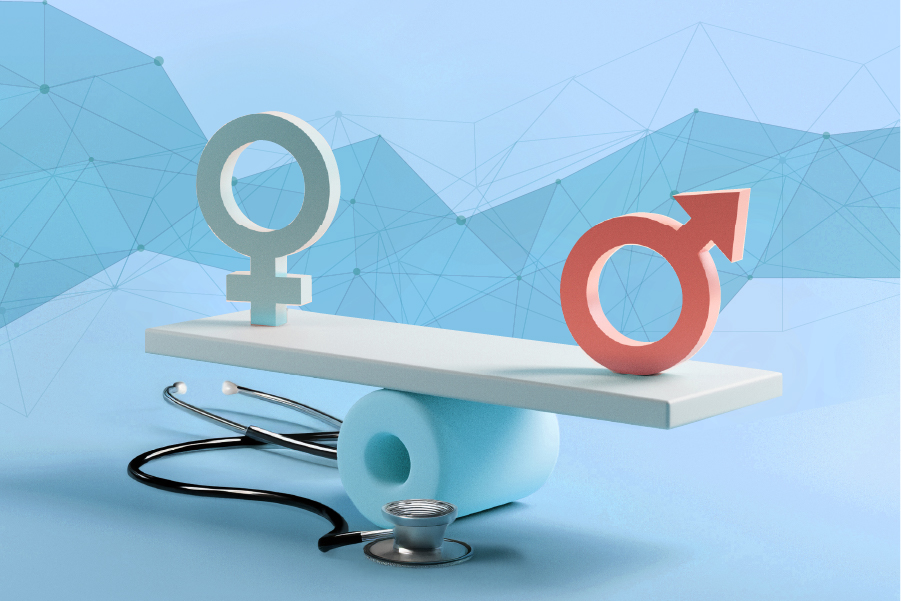Why does a gender gap exist in healthcare,
and how does it affect women’s health?
More importantly, what is being done to address it?
Issue 8 | March 2025

 Subscribe and ensure you don't miss the next issue!
Subscribe and ensure you don't miss the next issue!
Did you know that women in Singapore lose an average of three days in their lifetimes to unmet healthcare needs? Measured in Disability-Adjusted Life Years (DALYs), a metric that accounts for the time lost due to poor health or premature death, this gap adds up to nearly 40,000 DALYs annually, according to a report by McKinsey Health Institute. It reflects the broader reality that women are more likely to experience delayed diagnoses, inadequate treatment or overlooked symptoms.
Take heart disease, for example, the leading cause of death among women in Singapore. While it claims as many lives as it does in men, more than 80 per cent of women remain unaware of its severity or symptoms. Various conditions, from endometriosis to polycystic ovary syndrome to menopause-related complications, are also frequently misunderstood, misdiagnosed or dismissed as psychological rather than physiological concerns.
“Much of this can be traced to a persistent gender gap in healthcare, one that is deeply rooted in medical research, medical practice and public awareness,” says Associate Professor Sophia Archuleta, Assistant Dean (Equal Opportunities and Career Development), Yong Loo Lin School of Medicine, National University of Singapore (NUS Medicine). “The assumption has long been that men and women respond to diseases and treatments in the same way, apart from reproductive health.”
However, that is simply not the case — and this knowledge gap has real implications for women’s health.
The roots of the gender gap in healthcare
Understanding why this gap exists is the first step towards addressing it. For decades, medical research has been conducted predominantly on men — it was assumed that findings would apply equally to women. This approach has led to under representation of women in clinical trials, meaning that many treatments and medications are designed based on male physiology. A recent study found that women made up only 40 per cent of participants in nearly two-thirds of local clinical trials in key areas such as infectious diseases, cardiology, endocrinology and psychiatry.
“The scarcity of studies on women’s health and their historical exclusion from research cannot be overlooked, says A/Prof Archuleta, who is also Head & Senior Consultant, Division of Infectious Diseases, Department of Medicine, National University Hospital. “For instance, while COVID-19 vaccines have been linked to changes in menstrual cycles, little research exists due to the lack of focus on women and infectious diseases. Similarly, despite women facing a higher risk of dementia, studies on the condition are relatively recent, likely due to under representation.”
Further, in Southeast Asia, cultural stigma around topics like menstruation, menopause and reproductive health discourages open discussions. Many may dismiss symptoms as normal or hesitate to seek medical attention, which often leads to delayed diagnosis.
Efforts to close the gap
Closing the gender gap in healthcare entails multifaceted changes, beginning with the way medical research is conducted. In Singapore, the Global Centre for Asian Women’s Health at NUS Medicine was established in 2023 to advance women’s health. The Centre aims to increase women’s representation in local clinical research, address common women’s health issues and turn research into practical steps for earlier prediction, prevention and treatment of various health conditions.
On the other hand, it remains culturally taboo to openly discuss topics surrounding women’s health, such as sexual well-being and infertility. “To address cultural issues, public education plays a crucial role,” says A/Prof Archuleta. “Stigma and taboo can be gradually chipped away as mainstream media publishes more health news from credible and reputable sources to help everyday women understand their bodies and the symptoms they go through for different health conditions. ”
“As efforts continue to bridge the gender gap in healthcare, women should also take an active role in their health,” adds A/Prof Archuleta. “That means understanding your risks, prioritising regular check-ups, finding healthcare professionals you trust, and building a support system that allows you to share experiences and receive emotional support and assistance when needed.”
Like this article? Simply subscribe to make sure you don't miss the next issue of EnvisioningHealth!




















